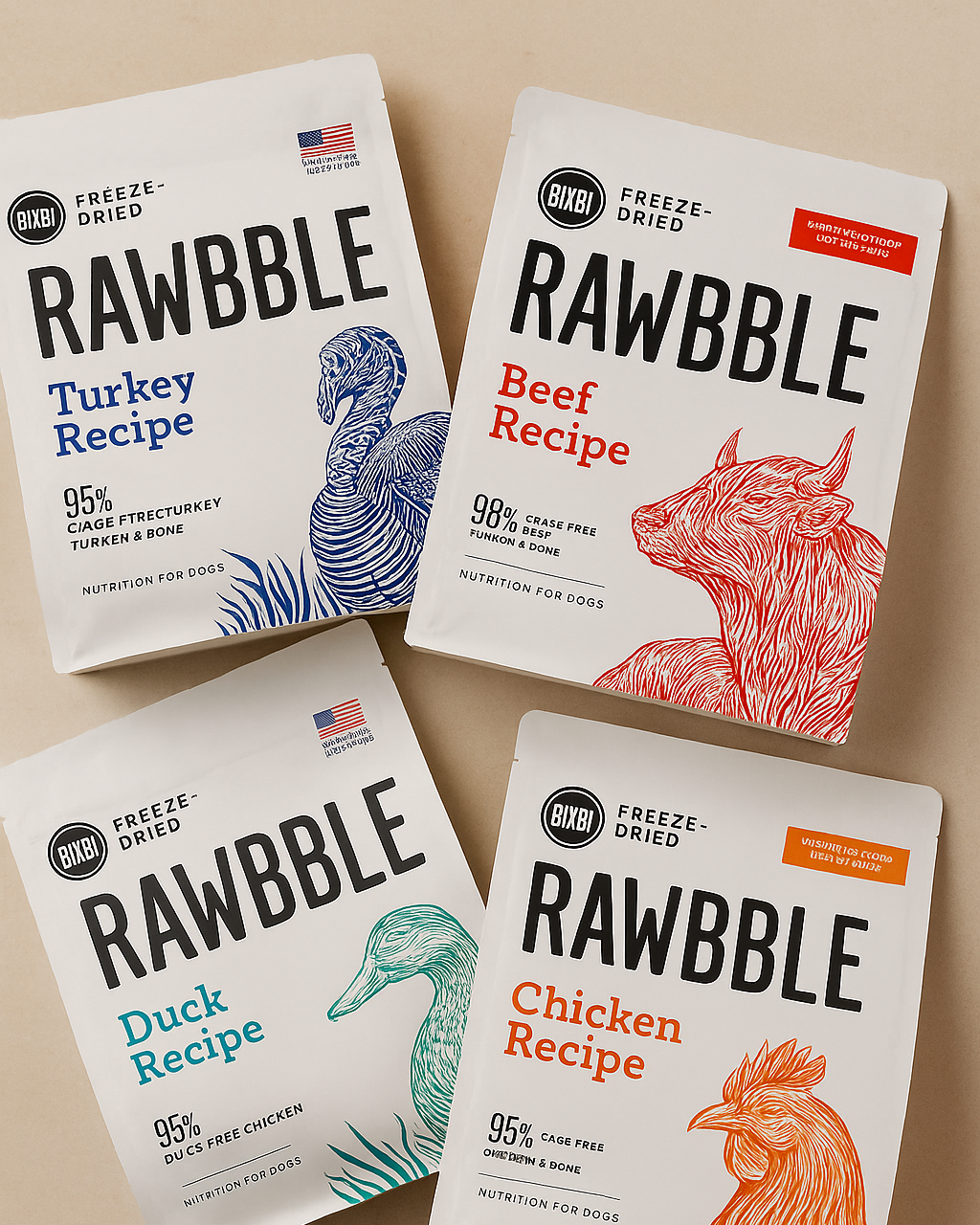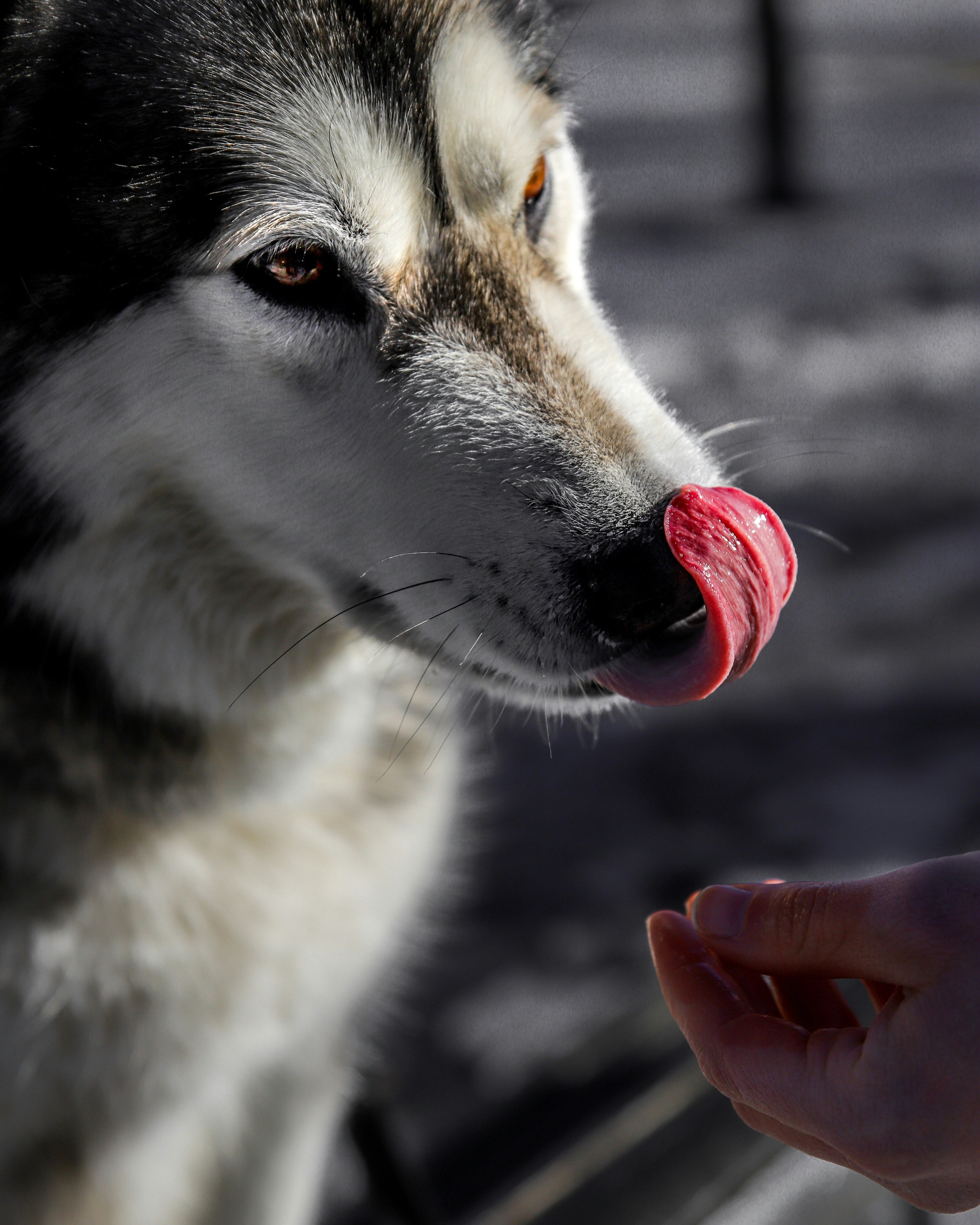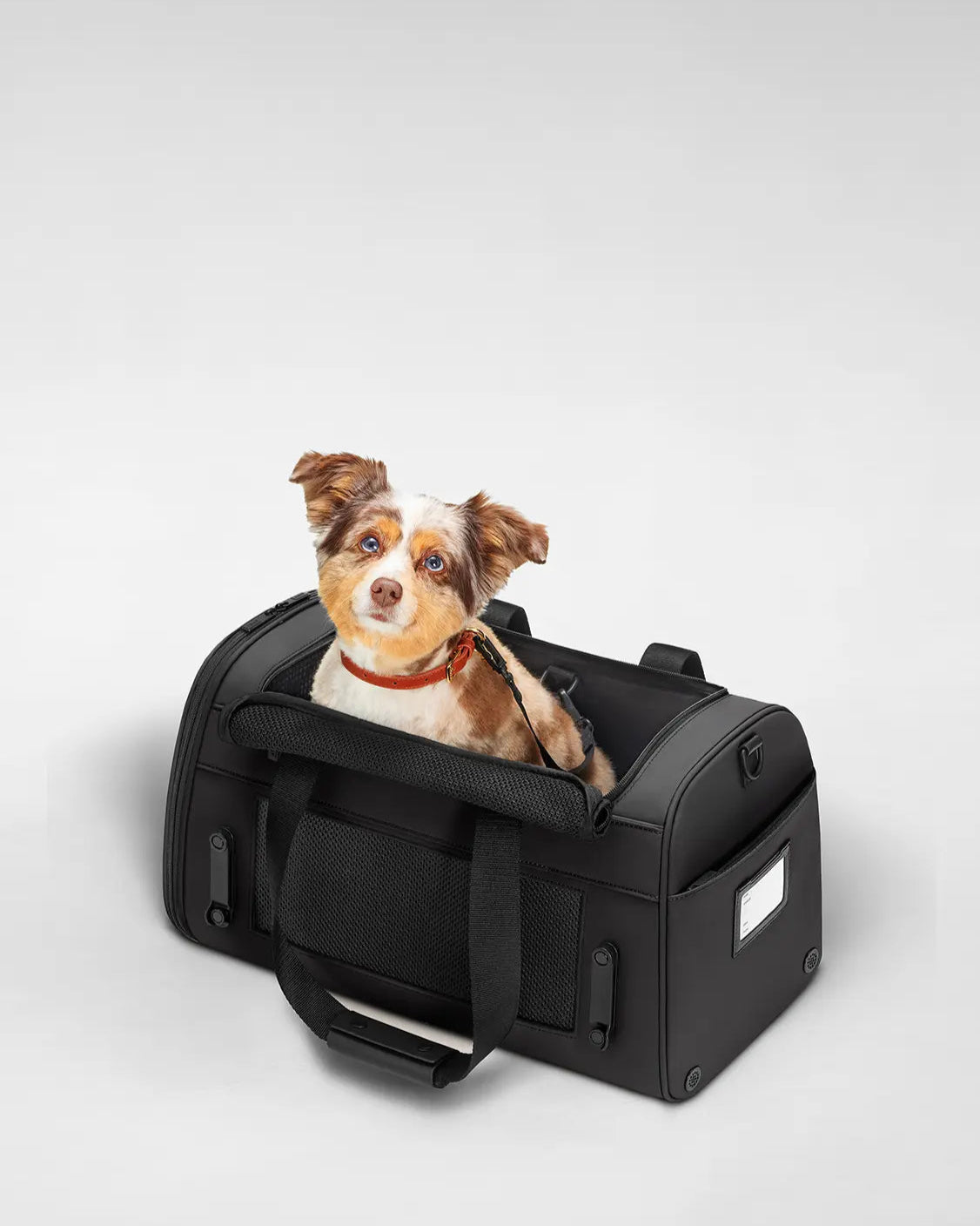The Ultimate Dog Food Comparison Guide: Raw vs.Kibble vs. Fresh/Frozen vs. Freeze-Dried
Choosing the right food for your dog has never been more complicated, or more important. With so many options on the market in 2025, how do you know what’s the healthiest dog food? Kibble is convenient. Raw is natural. Fresh is trendy. And freeze-dried? Somewhere in between. At Eva, we believe you’re never wrong to do the right thing, and when it comes to feeding your dog, that means knowing what’s in the bowl and why it matters.
That being said, in this guide we break down the pros, cons and considerations of the top dog food forms so you can make an informed, confident choice.
The Ultimate Dog Food Comparison Guide
Whether you're wondering about the best dog food 2025, comparing raw vs kibble dog food or curious about freeze-dried vs fresh dog food, we’ve got you covered. Let’s get right into it…
What It Is
Kibble is dry, processed dog food made by cooking and shaping ingredients under high heat and pressure.
Pros:
• Shelf-stable and convenient.
• Affordable and widely available.
• Easy to measure and store.
Cons:
• Heavily processed with nutrients that may degrade during production.
• Often contains fillers and artificial preservatives.
• Can lack moisture, which impacts hydration and digestion.
Best For:
Budget-conscious pet parents or dogs without complex dietary needs.

What It Is
Kibble is dry, processed dog food made by cooking and shaping ingredients under high heat and pressure.
Pros:
• Shelf-stable and convenient.
• Affordable and widely available.
• Easy to measure and store.
Cons:
• Heavily processed with nutrients that may degrade during production.
• Often contains fillers and artificial preservatives.
• Can lack moisture, which impacts hydration and digestion.
Best For:
Budget-conscious pet parents or dogs without complex dietary needs.

What It Is
Raw food is uncooked meat, bones, organs and sometimes vegetables, all designed to mimic a dog’s ancestral diet.
Pros:
• High protein, unprocessed and biologically appropriate.
• Excellent for skin, coat and dental health.
• No artificial additives or preservatives.
Cons:
• Can carry harmful bacteria if not handled properly.
• Requires time to make and freezer space and strict food safety.
• Not ideal for all dogs such as puppies, seniors or immunocompromised.
Best For:
Experienced dog parents who can manage safe prep and handling and want full control over ingredients.

What It Is
Fresh dog food is gently cooked meals made with whole, human-grade ingredients and is usually delivered in frozen or refrigerated form.
Pros:
• Balanced, real-food nutrition.
• Easier to digest than kibble.
• Often customized to your dog’s health needs.
Cons:
• More expensive than kibble or raw food.
• Requires refrigeration or freezing.
• Can spoil if not consumed promptly.
Best For:
Dogs with food sensitivities or picky eaters as well as families who value convenience and clean ingredients.
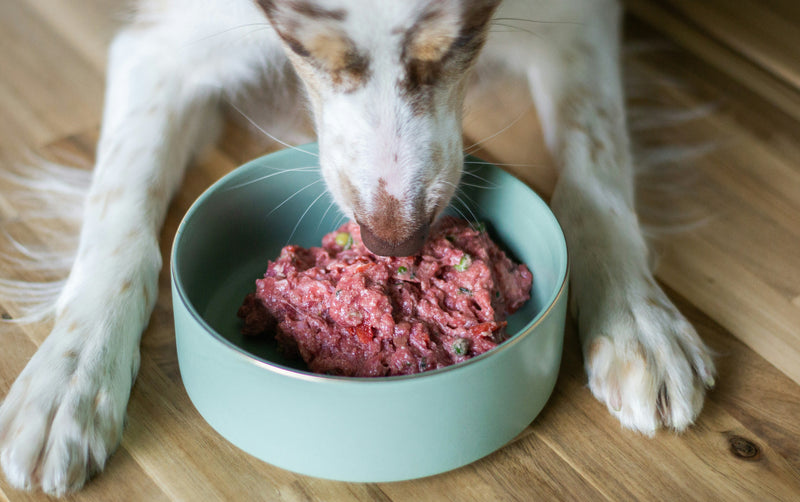
What It Is
Put simply, freeze-dried food is essentially raw food that has been freeze-dried to remove moisture while preserving nutrients, flavor and shelf life.
Pros:
• Retains the nutrition of raw without the mess.
• Shelf-stable, lightweight and travel-friendly.
• Often made with limited, high-quality ingredients.
• Rehydrates easily with water or bone broth.
Cons:
• More expensive than kibble.
• Some products vary in quality so it’s important to read ingredient labels carefully.
Best For:
Dog parents who want raw-quality food without raw prep, as well as a better balance of convenience, safety and nutrition.
Eva’s Point of View:
Freeze-dried strikes a happy medium between raw nutrition, fresh food quality and kibble-level convenience. For many families, it’s the smartest, most practical upgrade to their dog’s diet.
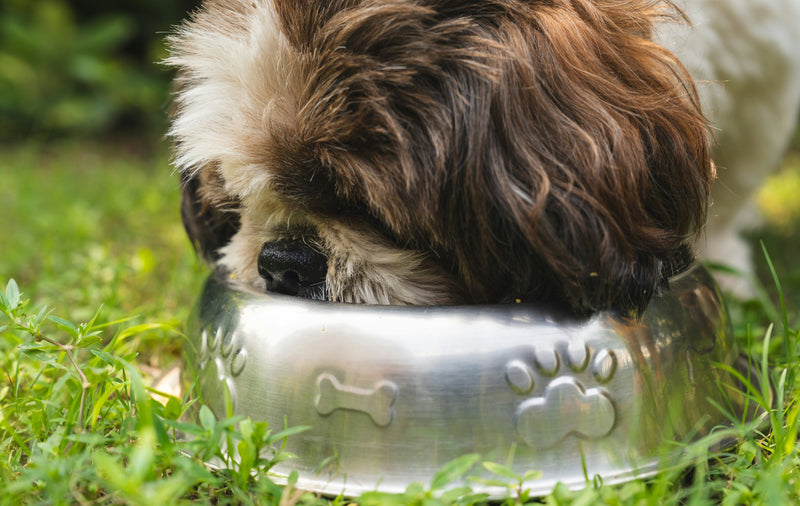
Eva’s Point of View
Freeze-dried strikes a happy medium between raw nutrition, fresh food quality and kibble-level convenience. For many families, it’s the smartest, most practical upgrade to their dog’s diet.

Complete Your Dog’s Bowl with Eva
Choosing the right food isn’t just about nutrition, it’s about doing right by your dog. At Eva, we curate only the finest freeze-dried, raw and fresh dog foods that balance quality, safety and convenience.
Whether you’re upgrading from kibble or managing sensitivities, we’ll help you find the perfect fit. Freeze-dried options offer the happy medium: raw-inspired nutrition, travel-friendly and easy to serve.
That said, explore Eva’s trusted dog food collection today, where nourishment meets care, and quality is never compromised!
FAQs About the Different Types of Dog Food
Fresh dog food is typically less processed and made with whole, lightly cooked ingredients, making it easier for most dogs to digest. It supports healthier skin, coat and digestion compared to most kibble.
That said, freeze-dried food offers a happy medium, providing the nutritional integrity of fresh food with the convenience of kibble.
Raw food can be safe if it’s handled correctly and sourced from reputable brands. It provides excellent nutrients but poses risks such as bacterial contamination if not properly prepared or kept.
Freeze-dried raw food is a safer option because it retains raw nutrition while getting rid of most microorganisms throughout the freezing process.
The ideal food for dogs with allergies is one with few ingredients and no common allergens like chicken, dairy, wheat or soy. Fresh and freeze-dried versions are frequently preferred since they include fewer and more clear ingredients. Freeze-dried foods containing new proteins such as lamb, rabbit or venison are particularly beneficial for sensitive dogs.
Absolutely! Adding freeze-dried to kibble is a simple way to improve your dog's diet without making drastic changes. When rehydrated, it improves protein quality, tastes better and adds moisture. It's one of the simplest methods to improve nutrition while minimizing interruption.
This should be done carefully and slowly. In order to do this, make a gradual shift over 7 to 10 days. Start by mixing 25% new food with 75% of your dog's current food, then gradually increase the new amount. If you're transitioning to fresh, raw or freeze-dried foods, take it carefully and keep an eye out for digestive issues.
Avoid artificial preservatives such as BHA and BHT, unidentified meat meals, byproducts, added sweeteners, artificial colors and components such as "animal fat." Whether it’s kibble, fresh or freeze-dried, choose transparency over mystery.
Overall, yes it is, since fresh food promotes long-term health. However, if cost or storage are an issue, freeze-dried food provides similar benefits, including a longer shelf life and easier preparation. It strikes the perfect balance between quality and functionality.


